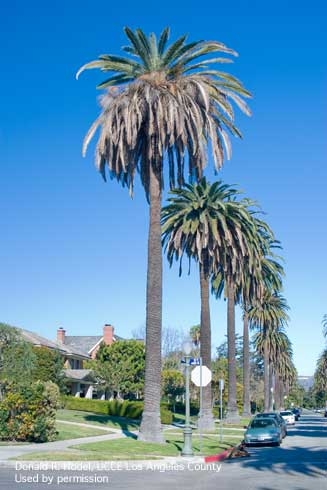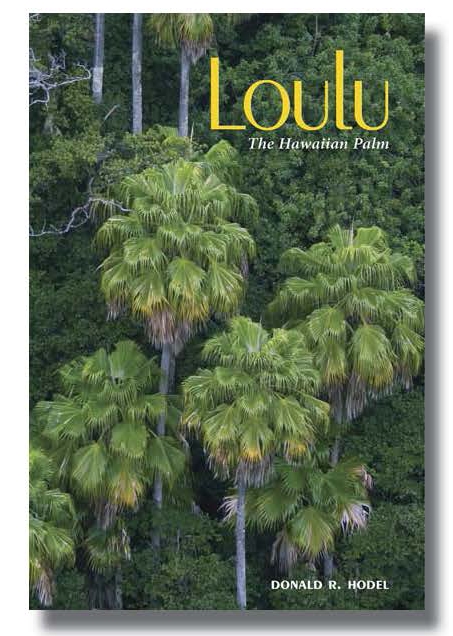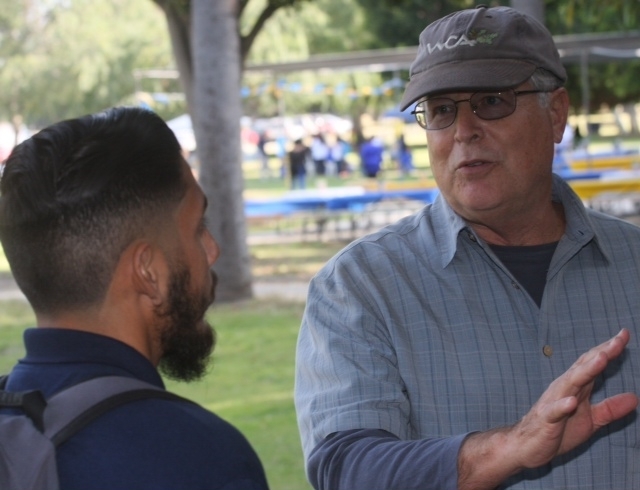
Posts Tagged: hodel
Houseplant Pests
Like outdoor plants, houseplants can also experience pest problems. Did you know that too much or...
Keep Your Palm Trees Disease-free
Palm trees are commonly seen in California, making some think about the tree-lined streets of...

D-WO-FOXY-FO.010
UCCE palm tree expert Hodel to retire after 36 years of advising landscape industry
Don Hodel, University of California Cooperative Extension environmental horticulture advisor for Los Angeles County, will retire July 1 after more than three and a half decades.
“He is a valuable resource in Southern California and has provided me with assistance on many occasions,” said Jan C. Scow, a registered consulting arborist based in Santa Monica. “Most valuable, and where I have turned to him most frequently for his expertise, is his global knowledge of palm trees.”
Hodel, whose research focuses on the selection, planting and management of woody plants in the landscape, is an internationally recognized leader in the environmental horticulture world.
“Don has been a reliable first-call for advice and recommendations and palms and ficus,” said James Komen, a consulting arborist based in Glendale. “He has been an encyclopedia of tree and plant identification. He has an infectious excitement for all things new, and he has been willing to challenge long-held assumptions in his search for truth.”
Hodel has contributed valuable knowledge to the California landscape industry, according to Komen.
Hodel introduced and promoted new woody plant material suitable for California's climate. He developed landscape plant management techniques and practices that reduce green waste stream, support sustainability and help residents save money. He also advocated irrigation practices that help save water and management techniques that reduce damage to plants by landscape pests and diseases.
“He has left a legacy of trees by adding to and caring for the collections of many arboreta, including the Los Angeles County Arboretum in Arcadia, and the Ho'omaluhia Botanical Garden in Kaneohe, Hawaii,” Komen said. “He has conducted, led, collaborated on and inspired research and experimentation that has been published in trade and peer-reviewed journals including Arboriculture and Urban Forestry, Arborist News, Western Arborist, and Palms. His book on common landscape palms in California has been a go-to resource for landscapers and arborists alike.”
The City of Long Beach, with over 93,000 street trees and 27,000 park trees, sought Hodel's advice.
“Mr. Hodel was instrumental in diagnosing and identifying the tulip tree scale affecting our magnolia trees throughout Long Beach,” said Jerry Rowland, an arborist for Long Beach Public Works Department. Hodel was able to diagnose the ficus branch dieback that affected many ficus trees in the city and identified eight declining palm trees that needed to be removed and replaced, Rowland said. Long Beach's Parks Department, Marine Bureau, and Tidelines also tapped Hodel's expertise.
In 2014, Hodel produced and co-presented a day-long seminar in Spanish for Spanish-speaking tree workers on palm biology and working safely while managing palms. “It was immensely rewarding interacting with these workers, especially seeing them grasp the knowledge and techniques that will help keep them safe,” Hodel said.
“Don has been a teacher, a selfless resource of valuable information, a colleague and a friend,” arborist Scow said, adding, “Don has provided a valuable and welcome boost to many in the arboricultural profession and has ‘done the UC proud!'”
Over the years, Hodel has received numerous prestigious awards including UC ANR's Award for Research (1993), Western Chapter International Society of Arboriculture Award of Arboricultural Research (2009), and Southern California Horticulture Association's Horticulturist of the Year (2014).

“I have been honored and privileged to have worked for the University of California for 36 years doing what I love—researching, writing and sharing information with homeowners and the landscape industry,” Hodel said. “I am very thankful to UC for providing me with a platform to accomplish my work.”
Hodel received his bachelor's degree in ornamental horticulture from the California State Polytechnic University in Pomona and his master's degree in tropical horticulture from the University of Hawaii in Honolulu. Prior to joining UC, he worked in the industry for eight years in Hawaii and California.
“We will miss him very much,” said Keith Nathaniel, UC Cooperative Extension director for Los Angeles County. “His work has contributed tremendously to UC Cooperative Extension and its mission of addressing local issues with innovative solutions through the power of UC research. It will be difficult to replace his high-caliber knowledge and expertise.”
“Personally speaking,” Rowland said, “it has been a pure joy working with Mr. Hodel. Over time I have come to know him as my friend, I wish him best wishes on his retirement.”
During retirement, Hodel plans to remain active and continue his support of the university with his emeritus status. Along with completing his current research projects, he plans to finish writing three books. One is about the palms of Cuba, based on his three research trips to the island-nation from 2016 to 2018. The second is a guide to identify and manage ornamental Ficus (figs) in California and Hawaii. The third is a compendium of dryland trees suitable for the Southern California landscape.
“I have a lot of information in my head that I want to share before it is too late!” said Hodel.
Iconic Los Angeles fig tree topples during local festival
A 140-year-old Moreton Bay fig tree that shaded a plaza at El Pueblo de Los Angeles Historical Monument toppled suddenly during a Chinese lantern festival, reported Matthew Ormseth in the Los Angeles Times. The imposing tree was likely a victim of urbanization, according to UC Cooperative Extension horticulture advisor Don Hodel.
The commanding breed of tree with an enveloping canopy was brought to Southern California from Australia in the 1860 and 1870s to provide shade and ornamentation, Hodel said.
"Their grandeur; their size - they have an imposing habit; their root structure is incredible; the spreading nature of the branches," Hodel said of Moreton Bay figs.
However, when he last saw the fig tree and three others at El Pueblo de Los Angeles Historical Monument six years ago, "I wasn't too impressed by their health or their size, considering they're 140-something years old," Hodel said.
The fact that the tree was growing in a planter surrounded by concrete likely contributed to its early demise.
“In a well-maintained landscape — what I call ‘benign neglect,' where you give a tree some water, let the leaves fall and leave them where they lay — I imagine it could live 200 years or more,” Hodel said.
Bronze Bug: A New Threat to Eucalyptus Trees in California
[From the May 2017 issue of the UC IPM Green Bulletin] The bronze bug (Thaumastocoris peregrinus)...
![Fig 7. Leaf showing bronze discoloration. [D. R. Hodel]](http://ucanr.edu/blogs/UCIPMurbanpests/blogfiles/44332.jpg)
Fig 7. Leaf showing bronze discoloration. [D. R. Hodel]


